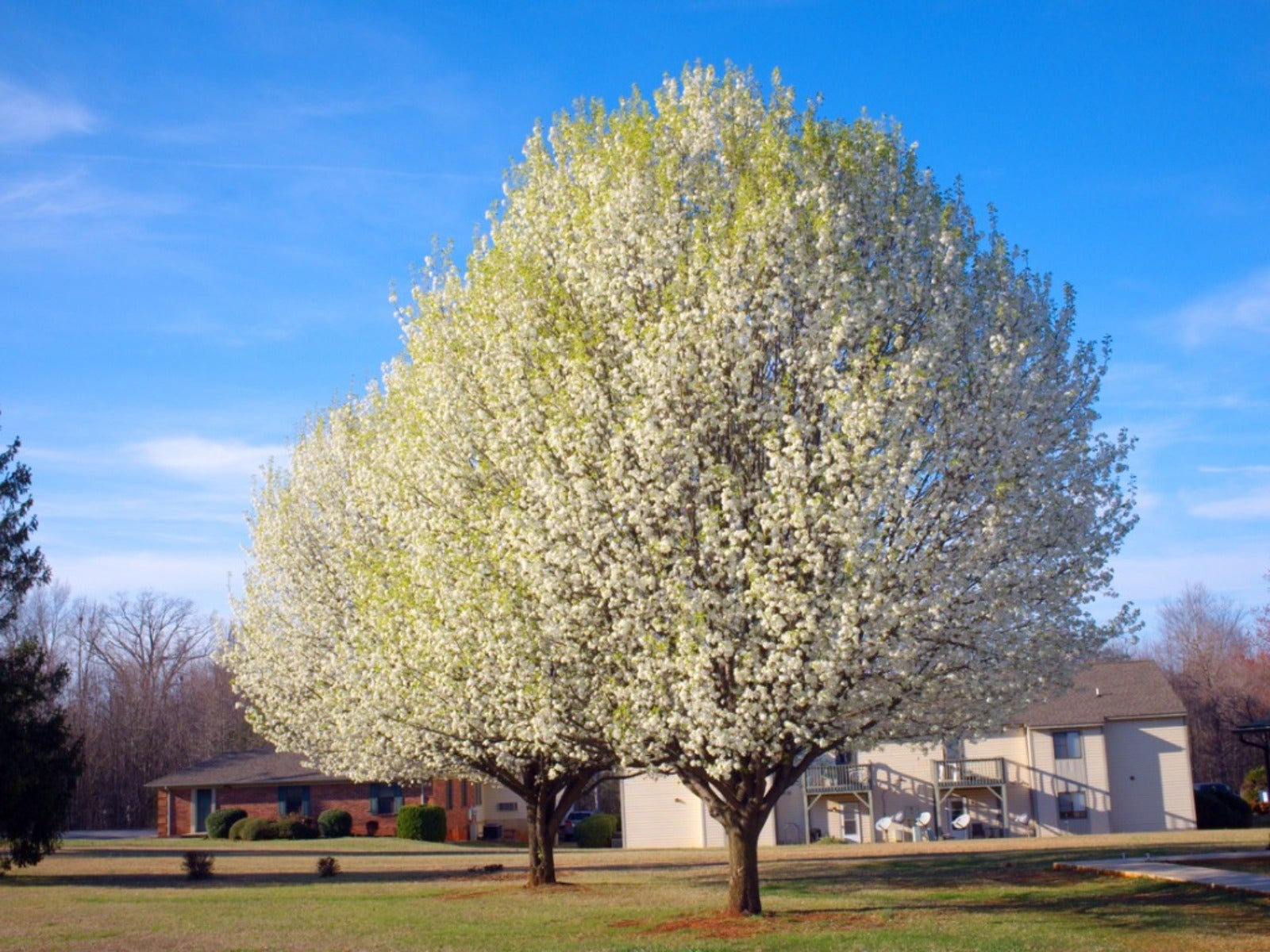Natives That Are Great Bradford Pear Tree Alternatives


Bradford pear trees (Pyrus calleryana) win admirers with their gorgeous spring show of millions of snowy white flowers, followed by their fiery foliage display in fall. But their invasive ways have made even the most loyal fans realize that Bradfords are undesirable landscape trees, and several states are in the process of banning them. This of course raises the next question: what is a good replacement for Bradford pear trees?
If this is your question, don’t worry - we’ve got you covered. Read on for a long list of excellent Bradford pear alternatives.
Bradford Pear Tree Replacement
If you are getting ready to take out your invasive Bradford pear tree, considering these facts will keep any regrets at bay:
- Bradford pear blossoms don’t have a fragrance to match their lovely flowers. In fact, they smell terrible.
- The spring flower show doesn’t last long and, all summer long, the trees don’t offer much in the way of interest, nor do they provide ecological benefits for wildlife.
- The branches of all Callery pears, including the popular cultivar Bradford, are brittle and break readily in high winds or in ice storms.
- These pears cross-breed in ways that make them extremely invasive.
Given these issues, it makes a lot of sense to select alternative trees. In fact, you’ll have to do so in Ohio, and several other states, since as of January 1, 2023, it is illegal to sell, plant or grow any Callery pear cultivars.
Picking an Alternative to Bradford Pear
If you are looking for the best tree to replace Bradford pears, there are dozens of fine alternatives. Many homeowners hope to find another tree with white blossoms. Here are six great choices:
- Serviceberry (Amelanchier spp.) - This great Bradford pear alternative offers not one but four seasons of backyard interest, including white spring flowers at just about the time Bradford blooms. But serviceberry also offers attractive blue-green foliage that blazes with gold and red in fall.
- Tree lilac (Syringa reticulata) - Though not a U.S. native, this Japanese tree grows to 30 feet (9 m) tall with an oval crown and creamy white flowers that attract pollinators. The bark is an elegant mahogany shade with prominent lenticels. To add to the package, the tree lilac is extremely tolerant when it comes to growing conditions and requires little maintenance.
- White Eastern Redbud (Cercis canadensis var. alba) - Check out this native variation of the normally purple Eastern redbud. It grows to 25 feet (7.6 m) tall with a rounded shape and pea-like white flowers in spring before the leaves open. The heart-shaped leaves of the redbud are a lovely addition, and the flowers are followed by attractive seed pods.
- Kousa dogwood (Cornus kousa) - Kousa dogwood is another four-season favorite with its mid-season white blossoms, fascinating peeling bark, and pretty pink fruit. The large white flower petals are in fact bracts that circle the true flowers at the center. These true flowers are responsible for the red, berry-like fruit. Wildlife come for these long-lasting treats.
- White Crabapple (Malus spp) - So many types of crabapple fit the bill that you can choose the size, color, time and shape of the blossoms. While the fruit isn’t sweet like true apples, the floral show will stop traffic.
- Sweet Bay Magnolia (Magnolia virginiana) - This small native tree grows to 25 feet (7.6 m) tall and is a good choice for moist sites. The magnolia’s ivory blossoms have some 12 petals that smell sweetly of lemon and long, shiny, dark leaves that are silvery beneath. The fruits have crimson seeds that are showy in their own right.
Other Native Alternatives to Callery Pear
You may want to consider some other choices when replacing your Bradford pear tree. Here’s a short list that may help:
- Eastern hophornbeam (Ostrya virginiana)
- American hornbeam (Carpinus caroliniana)
- Chokecherry (Prunus virginiana)
- American plum (Prunus americana)
- Blackgum (Nyssa sylvatica)
- Flowering dogwood (Cornus florida)
- Black haw viburnum (Viburnum prunifolium)
- Yellowwood (Cladrastis kentukea)
- Hawthorn (Crateagus spp.)
Sign up for the Gardening Know How newsletter today and receive a free copy of our e-book "How to Grow Delicious Tomatoes".

Teo Spengler is a master gardener and a docent at the San Francisco Botanical Garden, where she hosts public tours. She has studied horticulture and written about nature, trees, plants, and gardening for more than two decades, following a career as an attorney and legal writer. Her extended family includes some 30 houseplants and hundreds of outdoor plants, including 250 trees, which are her main passion. Spengler currently splits her life between San Francisco and the French Basque Country, though she was raised in Alaska, giving her experience of gardening in a range of climates.